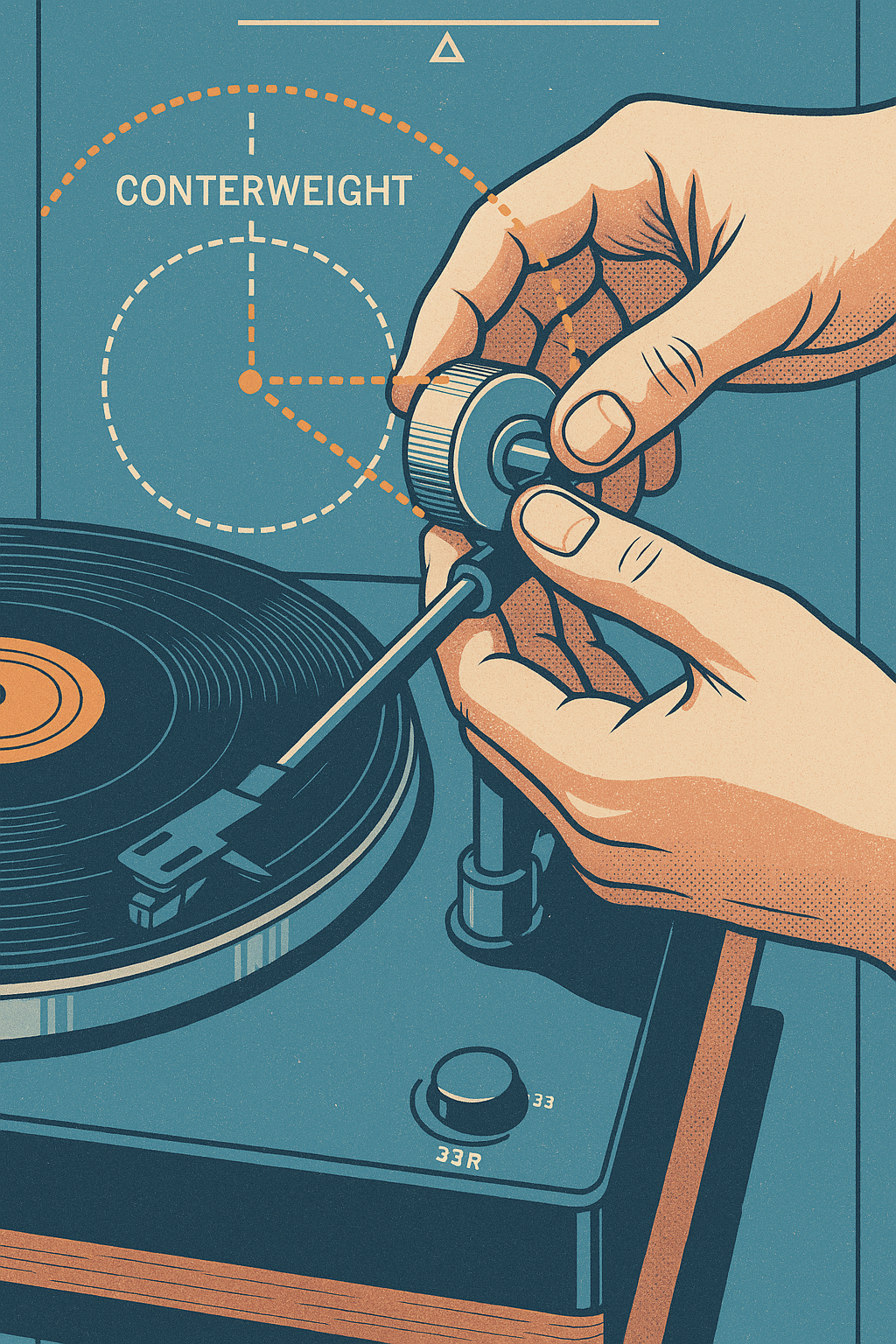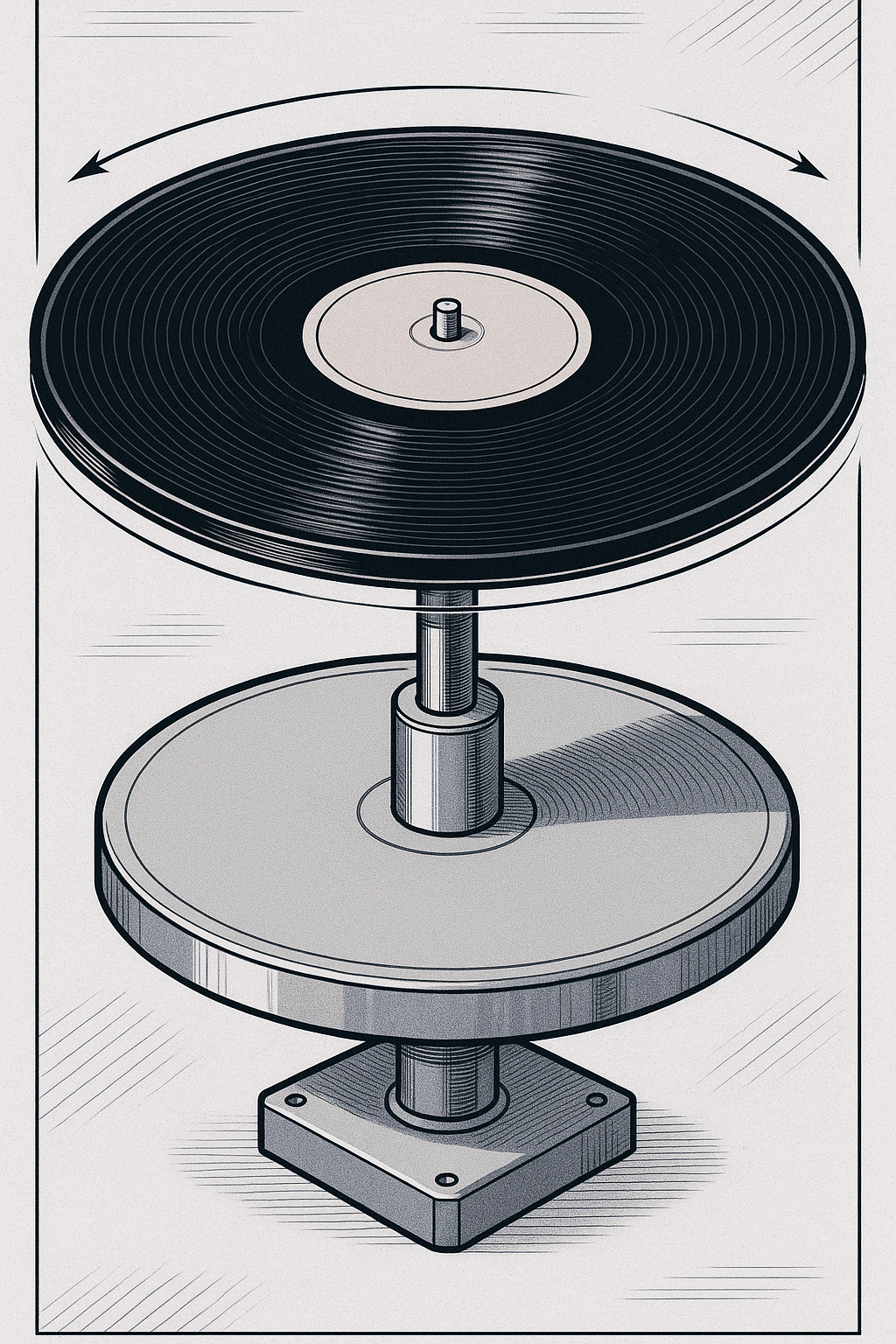Welcome to the thrilling, sometimes bewildering, world of record collecting! As you start to explore beyond brand-new shrink-wrapped LPs and delve into the vast universe of used vinyl, you'll quickly encounter a cryptic shorthand: M, NM, VG+, VG, G+, G, F, P. These aren't just random letters; they are condition codes, a standardized system (or attempts at one) used by sellers to describe the physical state of both the record and its cover.
Understanding these grades is paramount. It's the language that helps you gauge what you're actually buying, especially online where you can't physically inspect the record yourself. Getting this right means avoiding unpleasant surprises and building a collection you can truly enjoy, not one riddled with unlistenable discs and tattered sleeves.
Why Grading Matters: Beyond "Looks Okay to Me"
For a newcomer, a used record might just look like... well, a used record. But to a seasoned collector or a discerning audiophile, the subtle differences between a "Near Mint" and a "Very Good Plus" can mean the world in terms of playback quality, collectibility, and, of course, price.
-
Playback Quality: The grade of the vinyl itself directly impacts how it will sound. Scratches, scuffs, and wear translate to surface noise, clicks, pops, and potentially even skips.
-
Preservation of Artwork: The cover is an integral part of the vinyl experience. Grading helps assess its condition, from pristine artwork to ring wear, seam splits, and writing.
-
Value and Rarity: For collectible records, condition is a massive factor in determining market value. A rare record in Mint condition can be worth exponentially more than the same record in Good condition.
-
Managing Expectations: Accurate grading sets realistic expectations for the buyer. If you buy a "Good" record, you should anticipate some audible imperfections.
The Gold Standard (Mostly): The Goldmine Grading System
While various sellers and regions might have slight variations, the Goldmine Grading Standard is the most widely recognized and used system in the United States and much of the world. It provides a framework for evaluating both the vinyl (the disc) and its cover/inserts. Let's break down the key grades, keeping in mind that these are visual grades, though they strongly correlate with expected playability.
MINT (M): Absolutely Perfect
-
Vinyl: Perfect in every way. Often, this grade is reserved for records that are still sealed (though "sealed" doesn't automatically guarantee Mint, as damage can occur under the shrink wrap). If opened, it means the record is unplayed or looks as if it just left the pressing plant, with no visible marks whatsoever. Zero defects. Full, original gloss.
-
Cover: As perfect as the vinyl. No ring wear, seam splits, creases, writing, price stickers, or any other blemishes. Often still in shrink wrap (if applicable to the original release).
-
The Reality: True Mint records are exceedingly rare, especially for older pressings. Many sellers avoid using this grade altogether unless they are absolutely certain. Use with extreme caution when buying.
NEAR MINT (NM or M-): Nearly Perfect
-
Vinyl: A nearly perfect record. May have been played a few times, but shows no obvious signs of wear. The vinyl will retain its full gloss. There might be a tiny scuff or a very light hairline mark that is purely cosmetic and does not affect play. Surface noise, if any, will be minimal and only apparent in the quietest passages.
-
Cover: Should look as if it was just removed from the shrink wrap. Very minor signs of handling might be present, such as the faintest hint of ring wear or a tiny crease at a corner. No seam splits, writing, or significant flaws.
-
The Sweet Spot: For many collectors, NM is the highest practical grade for an opened record and represents a top-quality listening copy.
VERY GOOD PLUS (VG+ or Excellent/EX in some systems): Great Shape, Minor Flaws
-
Vinyl: Will show some signs that it was played and otherwise handled by a previous owner who took good care of it. Record surfaces may show some slight signs of wear, such as light scuffs or very light scratches that do not affect listening experience significantly. Clicks and pops might be present but should be infrequent and not overpower the music. Still has good gloss.
-
Cover: May have slight wear, such as light ring wear, minor seam wear or a small seam split (less than one inch), slight corner dings, or a cut-out mark (a notch, drill hole, or clipped corner indicating it was a promotional item or sold at a discount). No major defacing.
-
The Workhorse Grade: VG+ records are common, generally affordable, and provide a very satisfying listening experience. This is often considered the baseline for a collectible, enjoyable record. At XJ-HOME, we appreciate that a well-cared-for VG+ record can bring immense joy and represents fantastic value (explore our thoughts on enduring audio quality at https://xenonjade.com).
VERY GOOD (VG): Noticeable Flaws, Still Listenable
-
Vinyl: Many of the defects found in a VG+ record will be more pronounced on a VG record. Surface noise will be evident upon playing, especially in soft passages and during a song's intro and fade, but will not overpower the music otherwise. Groove wear may be noticeable, and light scratches (deep enough to feel with a fingernail) may be present that will affect the sound (audible clicks/pops).
-
Cover: Will have more significant signs of wear. Ring wear will likely be more obvious. Seam splits may be more prominent (perhaps on multiple seams). There might be writing, tape, or stickers (or their residue).
-
The Budget Option: VG records are typically good "player copies" where the music is still the focus, but you accept a higher level of surface noise. They can be a good way to acquire rarer titles more affordably if you're not a stickler for pristine sound.
GOOD (G), GOOD PLUS (G+): Significant Flaws, Plays Through
-
Vinyl: "Good" does not mean good! It means the record will play through without skipping, but it will have significant surface noise, scratches, and visible groove wear. Expect pops, clicks, and potentially some hiss throughout. Still, it should play without repeating or getting stuck.
-
Cover: Will be heavily worn. Seam splits may be extensive, ring wear very prominent, and there could be significant writing, staining, or tape repairs. May be missing pieces.
-
For Fillers or The Desperate: G/G+ records are generally not desirable for listening enjoyment unless the record is incredibly rare and this is the only condition you can find or afford. Often bought to fill a gap in a collection until a better copy comes along.
POOR (P), FAIR (F): Trashed
-
Vinyl: The record is cracked, badly warped, and won't play through without skipping or repeating. Heavy scratches, deep gouges. Essentially unlistenable.
-
Cover: Heavily damaged, water-damaged, torn, missing large pieces. Barely recognizable.
-
Avoid (Usually): These are typically only useful for the artwork (if any is salvageable) or as part of a lot for someone who wants to experiment with record crafts.
Beyond the Letters: Nuances & Seller Responsibility
-
Play-Grading vs. Visual Grading: Most online grading is visual. However, some meticulous sellers will play-grade a record, listening to it to confirm its sonic condition, which is always preferable. Don't hesitate to ask a seller if a record has been play-graded, especially for more expensive items.
-
"+" and "-": These are used to denote shades within a grade (e.g., VG++ is better than VG+, VG- is slightly worse than VG but better than G+).
-
Cover and Vinyl Graded Separately: You'll often see two grades, like "VG+/NM," where the first grade is for the vinyl and the second for the cover.
-
Subjectivity: Grading is inherently somewhat subjective. What one person calls VG+, another might call NM or VG. Look for sellers with consistently good feedback and clear grading descriptions.
-
Read Descriptions Carefully: Don't rely solely on the grade. Reputable sellers will often provide more detailed notes about specific flaws (e.g., "light scratch on track A3 causes 5 soft clicks," "2-inch seam split top edge").
-
Ask Questions: If in doubt, ask the seller for more details or photos. A good seller will be happy to oblige.
The Collector's Eye: Developing Your Own Grading Skills
As you handle more records, you'll start to develop your own eye for condition.
-
Lighting is Key: Inspect records under a bright, direct light source. Tilt the record to catch reflections that reveal hairlines and scuffs.
-
Feel for Scratches: Very gently run a fingertip (clean!) across a suspicious mark. If you can feel it, it will likely sound.
-
Check for Warps: Lay the record on a flat surface. Look for any lift or unevenness. Minor warps might be okay; significant warps can cause playback issues.
Understanding record grading is a fundamental skill for any vinyl enthusiast. It empowers you to buy with confidence, build a collection you're proud of, and truly appreciate the journey of discovering music on this timeless format. For a very detailed breakdown of the Goldmine standard and its application, the Goldmine Magazine website itself is an excellent resource.
Happy hunting, and may your finds always be NM!





Leave a comment
All comments are moderated before being published.
This site is protected by hCaptcha and the hCaptcha Privacy Policy and Terms of Service apply.